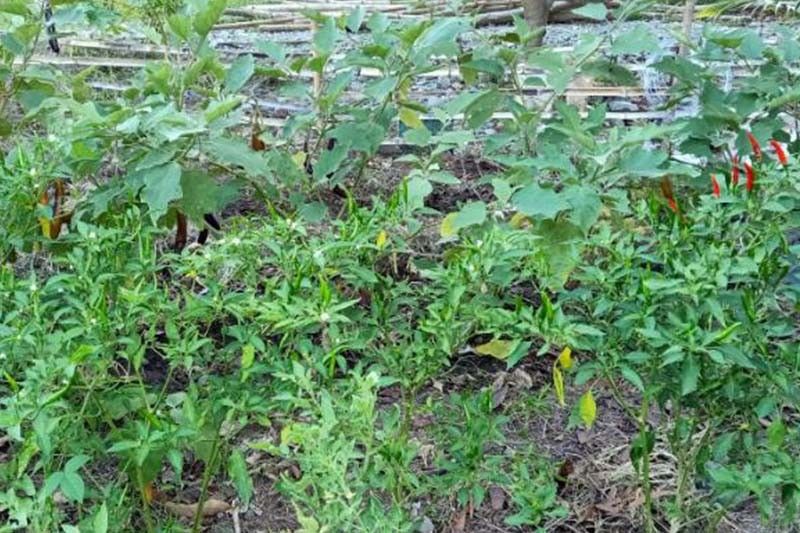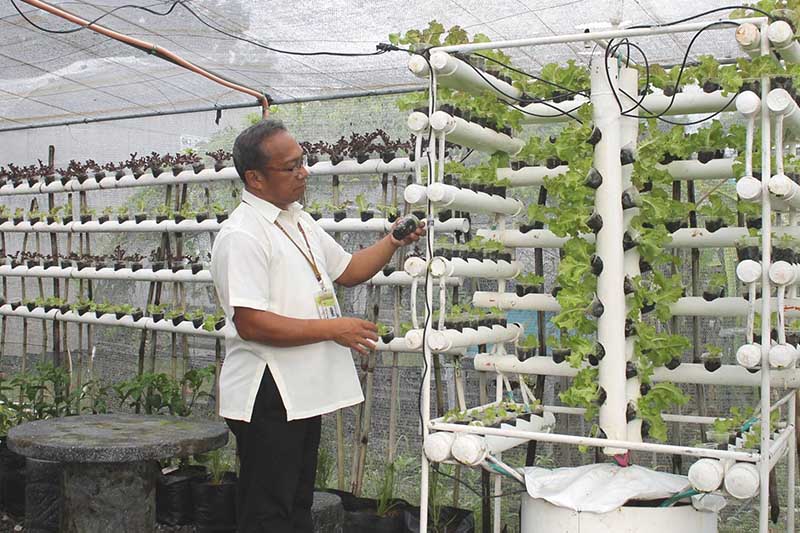Community gardens can help feed people post-pandemic

LUPAO, Nueva Ecija — With movement in many parts of the Philippines restricted to slow the transmission of the new coronavirus, the government has renewed a call for people to plant at home as an alternative food source.
Confinement measures in the Philippines began in mid-March as the number of COVID-19 cases piled up and the outbreak spread relentlessly across the archipelago. Metro Manila and other major urban areas at high risk of virus transmission will remain under strict virus lockdown at least until May 15, followed by a gradual easing of restrictions.
A Nueva Ecija-based agriculturist said community quarantines could provide a boost to urban farming and backyard gardening, which he said could address the stability of food supply during the coronavirus crisis and even in the long run.
“If you know how to plant, how to produce, you will be confident that you have food to eat even during a crisis or an event when there is food insecurity,” Jaypee Estigoy, an agriculture professor at the Central Luzon State University in Science City of Muñoz, Nueva Ecija, told Philstar.com in Filipino.
In an interview for Earth Day in April, community gardening was among the "easy but essential local community solutions" that Greenpeace Philippines country director Lea Guerrero said should be supported in anticipation of similar future crises.
Urban agriculture
In March, Agriculture Secretary William Dar said there is a need to promote proper implementation of urban agriculture to ensure a continuous supply of produce in the metropolis even when there is tightening of food supply from rural areas.
People in major urban centers such as Metro Manila generally rely on agricultural products produced in provinces or imported into the country.
"It will be very helpful if people in urbanized areas are taught to plant. They tend to forget about farming because they depend on farmers to provide their food. So, in their heads, they say 'I have a job, I have money to buy produce from farmers,'" Estigoy said in Filipino.
But money to buy goods is not as useful when supply chains are disrupted and there are less goods to buy.
In 2012, the United Nations said 67% of the world’s population is forecast to live in cities. A study published in journal Earth’s Future projected that urban agriculture can be an important part of keeping them fed, potentially producing between 100 and 180 million tons of food a year.
Urban farming can help urban dwellers save on food purchases and ensure that produce are healthier for human consumption. It can also shorten food miles, which means less use of fuel and therefore less greenhouse gas emission.
Urban agriculture can also create employment and generate income for the urban poor.
“Urban and peri-urban agriculture provides an opportunity for the social and economic integration of women, urban newcomers and youth. It helps reduce their vulnerability by diversifying livelihood opportunities and acting as a safety net for the less privileged and less educated sections of the population that often have no other job opportunities,” the United Nation’s Food and Agricultural Organization said.
Vertical farming
Estigoy said vertical gardening—or the practice of growing produce in vertically stacked layers—is the key to maximizing limited space in highly-urbanized areas.
"If you have one square meter, you can grow about 400 leafy vegetables layer by layer. If you plant on land, you can only fit around 25 leafy vegetables in the same area. Vertical gardening can increase production,” the agriculturist said.

A vertical garden in Central Luzon State University. CLSU Hydroponics Aquaponics/Facebook
He urged condominium managers or owners of apartment buildings in Metro Manila to consider putting up gardens on rooftops where tenants can grow agricultural crops.
With the incorporation of hydroponics—or the technology of growing plants without soil—communities can use a space of as little as 8x16 square meters to produce 1,000 honeydew melons or 5,000 leafy vegetables, Estigoy said.
But hydpronic system is highly technical and could be costly to adopt, especially for urban poor communities, which are the least food secure.
A less costly system of vertical farming that urban poor communities can adopt is using recycled containers with soil or compost to grow crops. They can also engage in vermiculture activities to produce quality organic products.
Agriculturists suggest planting leafy vegetables since they have a shorter production cycle and can be harvested between 20 and 25 days.
Residents of rural areas should also adopt vertical gardening but the technique is often disregarded because there is more space in the provinces, Estigoy said.
He said that rural communities might not see the need to adopt vertical farming "until they realize that the farmlands are gone or have been converted to subdivisions."
RELATED: Candidates urged to include food security, environment in platforms
Community farming will still be useful in rural areas, though, according to Leon Dulce, national coordinator of Kalikasan People’s Network for the Environment.
"If we promote agro-ecological food forests and urban gardens to benefit and to be managed by vulnerable communities, we also address the malnutrition crisis that makes our population at risk of succumbing to the pandemic," he said in an interview in April.
Backyard gardening programs
The DA, through the Bureau of Plant Industry, is distributing planting materials and free vegetable seeds such as eggplant, tomato, upland kangkong, pechay, string beans and upo in urban areas to ensure that food productivity and sufficiency is attained.
Seeds are available through the BPI's offices, through regional field offices of the DA, and through an online request form.
The BPI said it is establishing community gardens in barangays that have idle plots of land. The gardens are meant to sustain the initiative even after the coronavirus pandemic.
"We urge the public to join us in promoting this urban agriculture program to ensure a continuous supply of homegrown nutritious vegetables on the table of every Filipino household," Dar said in March.
The Joy of Urban Farming—an urban agriculture project of Quezon City Mayor Joy Belmonte—is also giving away seeds for the city’s residents.
Even before the coronavirus reached the Philippines, the provincial government of Albay had already been implementing a backyard gardening program, which seeks to ensure that families will have enough food supply.
"This program helps and ensure sustainable food supply for Albayanos," Gov. Al Francis Bichara said in a Facebook post.
- Latest































